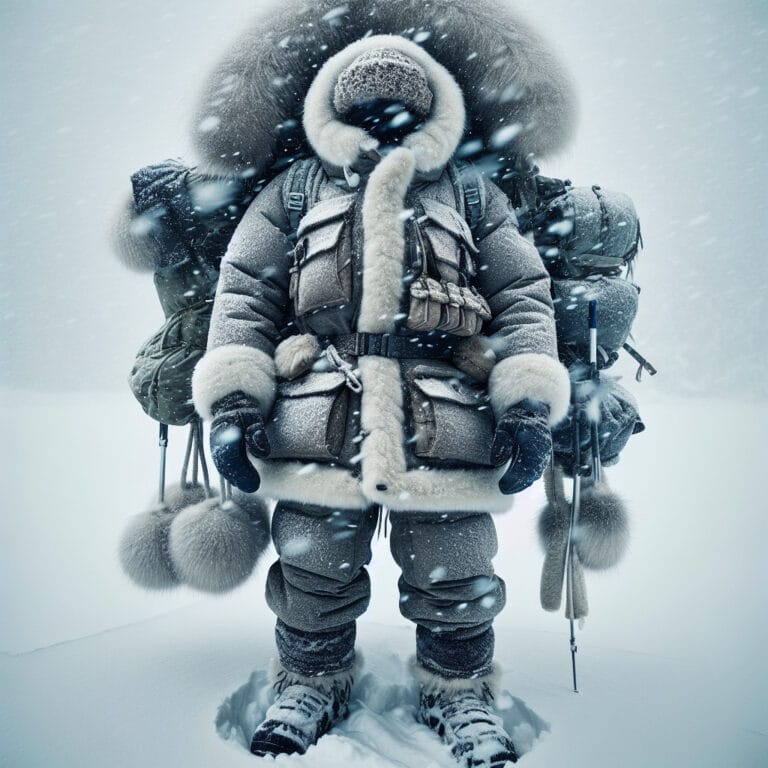
Mastering Breathwork Techniques for Optimal Cold Exposure Experience
Table of Contents
- Introduction: The Importance of Breathwork Techniques in Cold Exposure
- Understanding Cold Exposure: Benefits and Risks
- The Role of Breathwork in Cold Exposure
- Mastering Breathwork Techniques for Optimal Cold Exposure
- Practical Tips for Combining Breathwork and Cold Exposure
- Conclusion: The Impact of Mastering Breathwork Techniques for Optimal Cold Exposure
- Frequently Asked Questions
Introduction: The Importance of Breathwork Techniques in Cold Exposure
Did you know that the right breathing technique could profoundly enhance your cold exposure experience? This is where the Wim Hof method comes into play– a unique blend of cold immersion, breathwork exercises, and meditation. This technique, named after its founder Wim Hof, advocates for controlled hyperventilation followed by breath retention to stimulate the body’s sympathetic nervous system and increase blood alkalinity temporarily.
So how does this tie in with cold exposure? Let’s consider ice baths or cold plunging. When submerged in frigid water, our instinctive response includes heightened heart rate and fast breathing – a survival mechanism triggered by our sympathetic nervous system. However, through deep breathing techniques like those used in the Wim Hof Method Breathwork, we can consciously induce relaxation responses from our parasympathetic nervous system.
This counterintuitive approach has shown impressive results on brain scans – increased grey matter concentration and strengthened brain-heart interconnectivity. The practice further improves pain tolerance and even immune response. Intercostal muscles engaged during such deep breaths also promote improved lung capacity.
It’s essential to emphasize that while these benefits seem appealing, one must always work within their comfort level and ensure they’re practicing in a safe environment – especially while taking an ice bath or a cold plunge. Those with underlying medical conditions should consult healthcare professionals before trying these practices as it may not serve as a complementary therapy for everyone.
Apart from boosting resilience against cold showers or ice baths, adopting structured breathing exercises like four-square breathing could provide mental health benefits too: reducing anxiety levels and relieving stress—an effective tool for achieving holistic wellness combined with physical strengthening aspects of regular cold exposure sessions.
The impact of mastering the right breathing exercise is profound: it equips you with control over your body’s reactions to challenging situations such as extreme temperatures; it offers mental clarity and reduced anxiety levels—transformative experiences that extend beyond mere physical resilience towards temperature changes. Remember, breath isn’t just a life-sustaining process; it’s also a key to unlocking your body’s full potential.
Understanding Cold Exposure: Benefits and Risks
Embracing the chill of an ice bath or a cold plunge might seem daunting initially, but with the right toolset – such as effectively utilizing the Wim Hof breathing method – the health benefits could be substantial. While cold exposure in itself has been noted to improve circulation, enhance recovery after exercise, boost mood and even aid weight loss, combining this practice with specialized deep breathing techniques can amplify these effects and offer additional advantages.
Cold exposure fundamentally stimulates our sympathetic nervous system, temporarily increasing heart rate and initiating a fast-breathing response. However, through employing breathwork practices like those advocated by Wim Hof Method Breathwork—characterized by controlled hyperventilation followed by breath retention—we can consciously invoke relaxation responses from our parasympathetic nervous system instead. This method is unique in its ability to engage intercostal muscles leading to improved lung function while enhancing brain-heart connectivity evidenced on brain scans.
Furthermore, mastering such deep breathing exercises also aids in pain tolerance during icy immersions contributing to mental toughness—an aspect central to enduring cold temperatures. Moreover, it’s not just about bracing against physical discomfort; these methods have shown promising results in reducing anxiety levels and relieving stress– substantiating their role as complementary therapy for overall wellness.
However exciting these potential gains may seem though, safety must always come first when practicing cold plunging or ice baths. Adapting gradually to colder temperatures over time is recommended rather than shocking your body into sudden extreme conditions. In fact, if used improperly or without awareness of underlying medical conditions there can be risks associated with cold exposure such as hypothermia or cardiovascular shock.
Therefore it’s crucial that beginners enter this space under expert guidance—or at least—maintain a safe environment during practice sessions: never attempt alone if you’re new at it; start off warm then slowly bring down temperature; avoid submerging head underwater immediately; take slow deep breaths prior entering water for optimal oxygen supply; and always listen to your body, stopping if it feels uncomfortable.
Integrating the Wim Hof Method into your cold exposure routine could be a game-changer. Layering deep breathing techniques like four-square breathing onto this can potentially provide an even more robust platform for deriving maximal benefit from each icy plunge or shower. It’s not merely about braving the chill—it’s about rewiring your nervous system response to stress, honing mental fortitude while reaping physical health benefits one cold exposure session at a time.
| Aspect | Details |
|---|---|
| Benefits of Cold Exposure | Improves circulation, enhances recovery after exercise, boosts mood, aids in weight loss, improves lung function, enhances brain-heart connectivity, increases pain tolerance, reduces anxiety levels, relieves stress. |
| Role of Breathing Techniques | Helps to consciously invoke relaxation responses from our parasympathetic nervous system, improves lung function, enhances brain-heart connectivity, contributes to mental toughness, aids in tolerance during cold exposure. |
| Risks of Cold Exposure | Hypothermia, cardiovascular shock. These risks can be mitigated by adapting gradually to colder temperatures, avoiding sudden shock to the body, and being aware of underlying medical conditions. |
| Recommendations for Beginners | Start under expert guidance, maintain a safe environment, never attempt alone, start off warm and gradually reduce temperature, avoid submerging head underwater immediately, take slow deep breaths before entering water, listen to your body and stop if it feels uncomfortable. |
| Role of Wim Hof Method | Integrating the Wim Hof Method into your cold exposure routine can amplify the benefits of cold exposure. Layering deep breathing techniques like four-square breathing onto this can potentially provide an even more robust platform for deriving maximal benefit. |
The Role of Breathwork in Cold Exposure
Diving into cold waters, whether it’s an ice bath or a cold plunge, might initially trigger fast breathing and elevated heart rate – your sympathetic nervous system responding to the abrupt change. However, with the application of Wim Hof Method Breathwork, you can shift this response. This deep breathing technique combines hyperventilation with breath holds to stimulate relaxation responses from your parasympathetic nervous system. Harnessing the power of these breathing exercises is akin to unlocking a hidden superpower: control over your body’s reactions in challenging situations such as extreme temperatures.
Interestingly, brain scans have revealed increased grey matter concentration and enhanced brain-heart interconnectivity among practitioners – underlying the potential for not just physical but cognitive improvements too. It doesn’t stop there; research has shown that these techniques also improve pain tolerance during ice baths or cold plunging sessions – enhancing mental fortitude central to enduring chillier temperatures.
But how does breath impact pain tolerance? Deep breaths engage your intercostal muscles—tiny muscles that run between your ribs — promoting improved lung function and capacity. This allows for optimal oxygen supply throughout the body during periods of stress like during a cold shower or immersion in icy water. As you become more adept at wielding these powerful tools of breath control through regular practice of Wim Hof breathing method, you can effectively dial down discomfort associated with increasingly colder temperatures.
These health benefits may sound enticing, but it’s crucial to remember that safety should always be paramount when engaging in practices like cold exposure and deep breathing exercises meditation techniques . Early stages should be approached sensibly: start off warm and gradually work towards colder temperatures; never submerge your head underwater immediately; ensure you’re practising within a safe environment; importantly pay heed to any underlying medical conditions which may warrant professional consultation before diving into this practice.
Integrating structured four-square breathing exercises—which involves inhaling, holding the breath , exhaling ,and then pausing for equal counts—adds an additional layer of resilience, offering a complementary therapy to mitigate anxiety and stress alongside the strengthening aspects of regular cold exposure sessions.
The Wim Hof Method isn’t merely about surviving the chill—it’s about thriving amidst it. Notably, shifting your fast breathing response to a relaxation breath is just one facet of this holistic method. It also puts you on a path towards improved mental clarity, reduced stress levels and an enhanced sense of well-being. By mastering breathwork techniques in cold exposure, you open up avenues for self-improvement that extend beyond mere physical resilience towards temperature changes – shaping a journey towards holistic wellness.
Mastering Breathwork Techniques for Optimal Cold Exposure
The transformative power of breathwork techniques in cold exposure can be experienced by anyone willing to embrace the chill and harness their inner strength. The acclaimed Wim Hof Method, a unique amalgamation of cold water immersion, deep breathing technique, and meditation has been instrumental in enabling individuals across the globe to shift their body’s instinctive responses to extreme temperatures.
Resilience built through this method is not limited just to braving freezing dips in an ice bath or a cold plunge. It extends into mental fortitude that aids in everyday life stressors as well. To master this method, one begins by taking deep breaths – deeper than you normally would – which might feel like controlled hyperventilation initially. This form of deep breathing allows for optimal oxygenation of your cells and primes your system for the next phase: breath retention post exhalation.
During these moments without air intake – sometimes lasting up to several minutes – practitioners experience a profound sense of calm intertwined with heightened awareness; it’s here where the magic happens! Brain scans have shown significant changes including increased grey matter concentration and strengthened brain-heart interconnectivity amongst practitioners using these breathwork techniques.
Transitioning from this state into icy waters then becomes less about shock reaction and more about maintaining this cultivated equilibrium – an exercise that improves pain tolerance significantly over time with regular practice. A key aspect contributing towards this pain management involves engagement of intercostal muscles during deep inhalations that promote improved lung function and capacity allowing for efficient oxygen supply even under stressful conditions such as cold exposure.
However, mastering these techniques doesn’t happen overnight nor should it ever compromise safety standards. Be cautious if attempting an ice bath or cold showers – especially beginners or those with underlying medical conditions – always ensuring a safe environment is maintained throughout practice sessions.
Supplementing your Wim Hof breathing routines with four-square breathing exercises can offer additional benefits too including reducing anxiety levels and helping relieve stress – creating space for a holistic wellness approach encompassing both physical and mental health benefits.
Embracing the chill of cold water through the power of breath means more than just surviving an ice bath. It’s about rewiring your nervous system response to stress, carving out greater resilience and enhancing overall wellbeing – making it not only a technique but a powerful journey towards self-improvement by mastering breathwork techniques in cold exposure. As Wim Hof himself says, “You’re capable of much more than you think.”
Conclusion: The Impact of Mastering Breathwork Techniques for Optimal Cold Exposure
Mastering breathwork techniques for cold exposure, such as the renowned Wim Hof method, can have a profoundly transformative impact on your overall wellness. This method integrates ice bath immersion with deep breathing technique and meditation, shifting your body’s natural response to extreme temperatures from shock to tranquility. Over time, this practice not only improves pain tolerance during cold plunging but also fortifies mental resilience—benefits that extend beyond the realm of physical health. Imagine harnessing the power of each inhale and exhale as you plunge into icy waters; your heart rate might spike initially, but with controlled breaths, you activate your parasympathetic nervous system instead—the key to relaxation. Studies show that these exercises can enhance brain-heart interconnectivity and increase grey matter concentration in the brain. Supplementing this routine with exercises like four-square breathing can further reduce anxiety levels and relieve stress—a holistic approach towards wellbeing. Keep in mind safety protocols while practicing—especially those new or having underlying medical conditions—and always maintain a safe environment during sessions.



